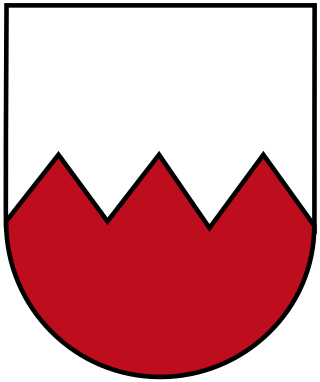
The German 73rd Infantry Division or in German 73. Infanterie-Division was a German military unit which served during World War II. The division consisted of more than 10,000 soldiers, primarily of the infantry branch, with supporting artillery. The division was only semi-motorized and relied on marching for the infantry units and horse-drawn transport for most of the support equipment, especially the artillery.

The 334th Infantry Division was a German Army infantry division in World War II. Originally formed in November 1942, it surrendered to the Allies at the conclusion of the Tunisian Campaign in May 1943. The division was reconstituted on 3 June 1943 in France within the 1st Army, with the staff of the 80th Infantry Division as well as remnants of the old division and replacement units. It spent the remainder of the war serving on the Italian Front.
The 21st Infantry Division was a German military unit which fought during World War II.
The 25th Division, officially the Grand Ducal Hessian (25th) Division, was a unit of the Prussian/German Army. It was headquartered in Darmstadt, the capital of the Grand Duchy of Hesse. The division was subordinated in peacetime to XVIII Army Corps when that corps was formed in 1899. The division was disbanded in 1919, during the demobilization of the German Army after World War I.

The 32nd Infantry Division of the German Army was mobilized on 1 August 1939 for the upcoming invasion of Poland. At that time, it consisted of the usual German infantry division elements: three infantry regiments of three battalions each, one three-battalion regiment of light artillery, one battalion of heavy artillery, a Panzerjäger (anti-tank) Battalion, a reconnaissance (Aufklärungs) Battalion, a Signals Battalion, a Pioneer (Engineer) Battalion, and divisional supply, medical, and administrative units.
This is the German Army order of battle on the outbreak of World War I in August 1914.

The 30th Infantry Division of the Wehrmacht was created on 1 October 1936 in Lübeck and mobilized on 26 August 1939 for the upcoming invasion of Poland. At that time, it consisted of the usual German infantry division elements: three infantry regiments of three battalions each, one three-battalion regiment of light artillery, one battalion of heavy artillery, a panzerjager (anti-tank) battalion, an aufklärungs (reconnaissance) battalion, a signals battalion, a pioneer (engineer) battalion, and divisional supply, medical, and administrative units.
The 5th Division was a unit of the Reichswehr.
The 2nd Division was a unit of the Reichswehr.
The 3rd Division was a unit of the Reichswehr.
The 4th Division was a unit of the Reichswehr.
The 6th Division was a unit of the Reichswehr.
The 7th Division was a unit of the Reichswehr.
The 2nd Cavalry Division was a unit of the Reichswehr, the armed forces of Germany during the Weimar Republic.
The 3rd Cavalry Division was a unit of the Reichswehr, the armed forces of Germany during the Weimar Republic. It consisted of 6 cavalry regiments, the 13th (Prussian), 14th, 15th, 16th, 17th (Bavarian), and 18th (Saxon) Cavalry Regiments. It was subordinated to Gruppenkommando 2.

The 15th Infantry Division was an infantry division of the German Army during the interwar period and World War II, active from 1934 to 1945.
Hans-Hellmuth Pfeifer was a German general during World War II. A veteran of World War I, he held higher command positions in WWII, among other, that of the 65th Infantry Division in Italy, selecting its hand grenade symbol which earned the nickname "The Hand Grenade Division."
Generalleutnant Walter von Hippel (Luftwaffe) (27 May 1897 – 29 November 1972) was a general in the Luftwaffe of Nazi Germany during World War II who commanded several flak divisions. He was also a recipient of the Knight's Cross of the Iron Cross.
The 290th Infantry Division was a German infantry division in World War II. It was formed in the Munster Training Area in Wehrkreis X on 6 February 1940 and surrendered to Soviet forces at the end of the war as part of Army Group Courland.
Franz Vaterrodt was a German general of the Second World War. From March 1941 to November 1944, he was the commander of the Place de Strasbourg.




